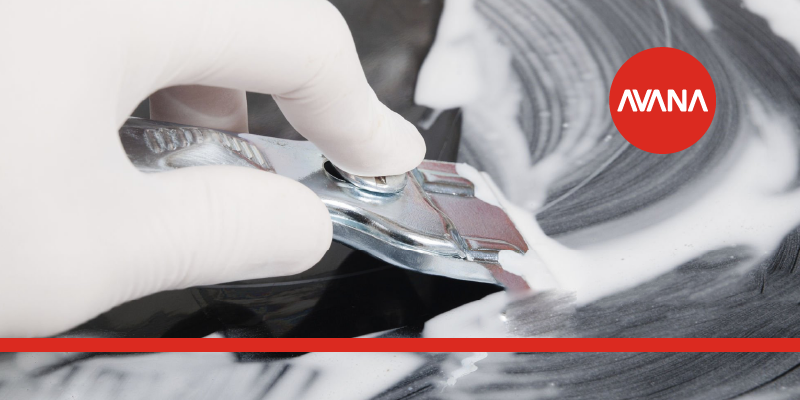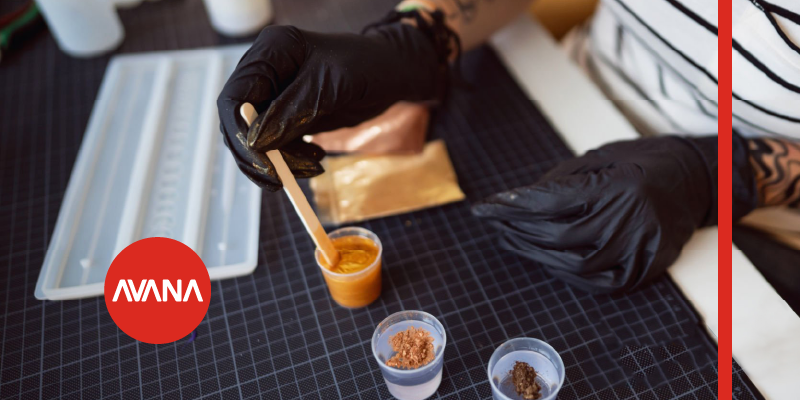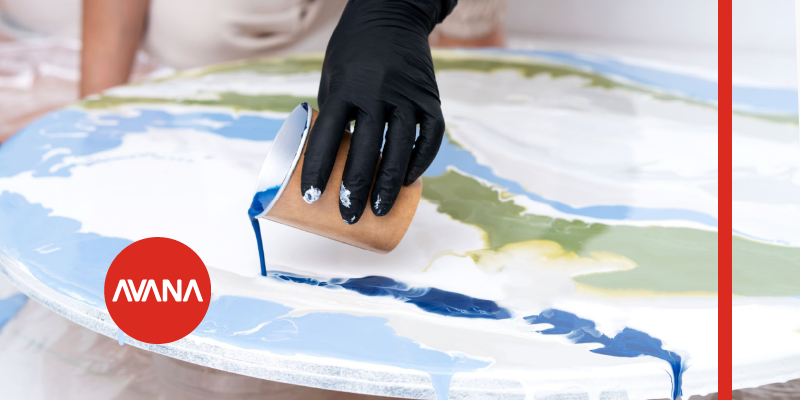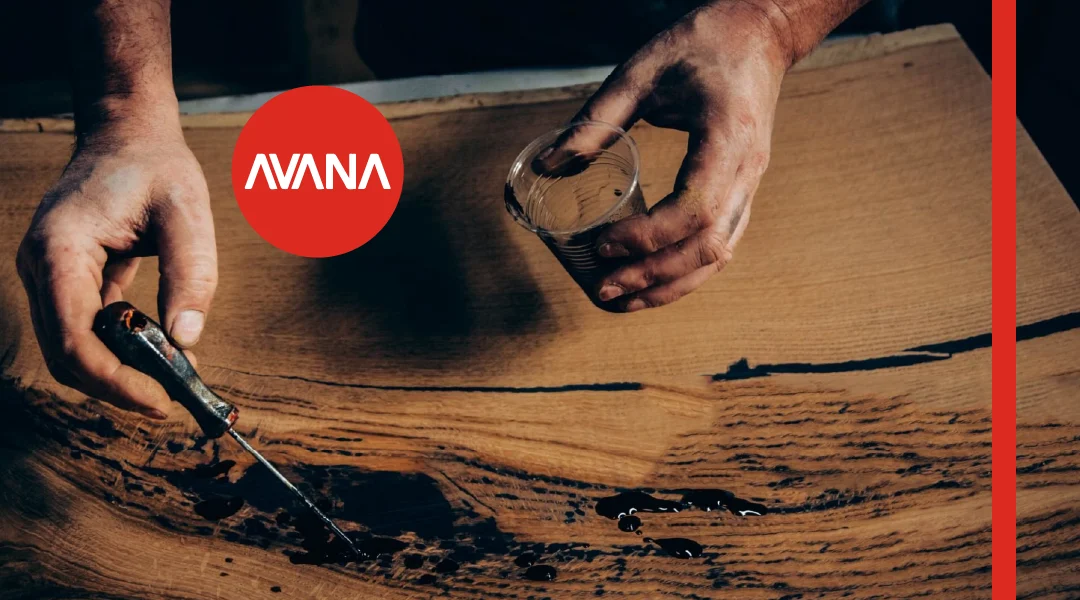“Can epoxy be used on wood?” Some believe that this is an effective solution to enhance and protect wood in the long term. The simple answer to that question is “YES!” However, it’s a tricky one, and you need to consider many effective factors, like choosing the best type of epoxy resin and the most appropriate way to apply it to the surface.
Kitchen epoxy flooring is a popular choice among people. However, if the kitchen’s surface is plywood, you can also use epoxy to make it more durable.
What Kind of Epoxy to Use on Wood?
Wooden floors are a perfect choice for houses and even commercial buildings. However, maintaining its beauty and durability can be a challenging and daunting task. Luckily, epoxy resin adheres best to textured and porous surfaces like this and you can easily benefit from this characteristic. Commercial epoxy flooring is another popular choice for a long-lasting and durable surface.
If you are searching for a better result, you need to choose the epoxy resin carefully. Choosing the best type of epoxy resin also depends on your project. If you want to create a smooth surface, you need a kind of epoxy that can harden up to 1.8 inches. However, for a project that requires a deep pour, you should choose an epoxy that can harden up to 2 inches.
In a nutshell, there are two types of epoxy flooring Brisbane that are appropriate for applying on the wood.
- Water-Based Epoxy: it is an ideal choice for residential areas, due to ease of application and low odor.
- Solvent-Based Epoxy: it is an ideal choice for high-traffic areas, as it deeply penetrates into the wood and creates a strong bond.

How Do You Prepare Wood for Epoxy Resin?
If you want a flawless, clear-coated finish, it is necessary to prepare the floor properly. The wood surface must be clean, smooth, and free from contaminants. Here is the best way to prepare the floor for epoxy. Can epoxy be used on wood? Here is how to prepare the such surface.
1- Clean the Surface
First of all, you have to make sure that the surface is clean, dry, and free of dust, dirt, and grease. For a better result, you can use a vacuum or tack cloth to remove dust. You can also wipe the surface with acetone or denatured alcohol to remove any remaining contaminants.
2- Sand the Surface
For a better result, you need to sand the surface and remove any rough spots. Use a coarse-grit sandpaper (60-80 grit) to smooth out the surface. After sanding, vacuum the surface and wipe it down with a tack cloth to remove all sanding dust. This stage will help the epoxy adhere better and reduce the risk of air bubbles.
3- Seal the Surface
At this stage, you have to apply a thin coat of epoxy crack filler or specialized wood primer to seal the pores, nail, and screw holes of the wood. Then just let the sealer coat dry for about 6 to 8 hours. Lightly sand the primed surface with fine-grit sandpaper (220 grit) and remove dust with a tack cloth.
4- Prime the Surface
Everything is different with wood floors. Wood floors need to be painted with primer first. For example, if floors are made of flexible plywood, you also have to apply a flexible epoxy primer.
5- Apply the Epoxy Resin on the Surface
After thoroughly preparing the surface, you can apply the epoxy resin on the wood. For a better result, pay attention to the manufacturer’s instructions on the product, and carefully measure the resin and hardener according to the instructions.
How to Apply Epoxy on Wood?
If you desire a flawless and durable epoxy coating on wood, you should act as follows:
1- Mix the epoxy and hardener.
2- Use a roller and brush and apply a thin coat of epoxy.
3- Let the first coat cure for about 24-48 hours. This allows the epoxy to harden and bond with the wood surface properly.
4- If multiple coats are required, lightly sand the cured epoxy before applying additional layers.
5- At this stage, you can apply two or three more coats for better protection.
6- Do not walk or place furniture on the surface before drying.
Pros of Sealing
It’s not only the answer to the question “can epoxy be used on wood?” that matters. It’s also necessary to be familiar with the benefits of epoxy resin on wood. Using epoxy resin on wood floors offers its own advantages. Some of these advantages are as follows:
• With epoxy, you can benefit from a hard, durable surface that can withstand significant wear and tear. This makes it suitable for surfaces that experience heavy use, such as countertops, tabletops, and flooring.
• Epoxy is an excellent choice for protecting it from moisture damage, as it is highly resistant to water. It also protects wood from various chemicals.
• Apply the epoxy as mentioned before. Epoxy can produce a high-gloss finish that protects the natural beauty of the wood. It can also be tinted or combined with pigments to create custom colors and effects.
• Epoxy resin creates a shield that protects the wood from chemicals and staining. If you want to protect the wood surface from moisture and damage, epoxy is your best option.

Cons of Sealing
Can epoxy be used on wood? YES, of course! However it comes with its own advantages and disadvantages. Here are some of the disadvantages of epoxy coating for wood floors that need to be addressed.
• Epoxy resin is considered an expensive choice compared to other finishes. If you are searching for a cost-effective solution right now, then you should forget about epoxy flooring.
• You need to be careful in every step when applying epoxy. Incorrect mixing ratios, improper surface preparation can lead to issues such as bubbling, uneven surfaces, or incomplete curing.
• You should take good care of the epoxy floor, as some epoxy resins can yellow or degrade when exposed to direct sunlight over time.

Golden Tips for a Better Result
Do not hesitate! Epoxy coatings are the perfect solution for protecting and enhancing wood floors, as they are versatile and durable. Here are some golden tips to achieve a beautiful and long-lasting finish.
• If you want a flawless epoxy coated wood floor, you have to apply the epoxy in a controlled environment with moderate temperatures (70-80°F) and low humidity.
• Dust and debris can mar the epoxy surface. Clean the floor thoroughly for a better result.
• Applying a seal coat before the main epoxy layer helps reduce air bubbles and ensures a smoother finish. This step is especially important for porous wood.
FAQ
Can you apply epoxy directly to wood?
Yes, of course. However, you need to choose the best epoxy resin and the most appropriate way to apply it to the floor.
Does temperature affect the process?
Yes, if you want a flawless epoxy coated wood floor, you have to apply the epoxy in a controlled environment with moderate temperatures (70-80°F) and low humidity.
How can we prepare wood for epoxy resin?
Clean the surface, sand the wood, seal it, prime the surface and apply the epoxy.
How can we prevent bubbling on the surface?
By cleaning the surface thoroughly and mixing the ingredients as mentioned in the instruction, you can prevent bubbling.
Does Epoxy protect the wood surface?
Yes, it protects the wood surface from chemicals and damage.

